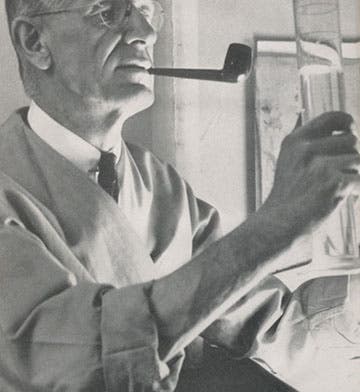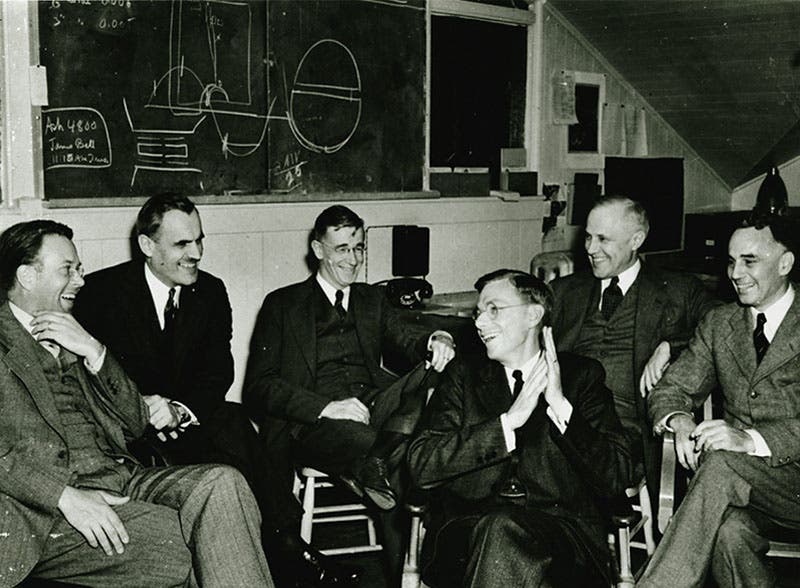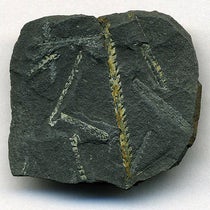Scientist of the Day - Vannevar Bush
Vannevar Bush, an American engineer turned science policy advisor, was born Mar. 11, 1890. Bush had a flair for both science and administration,which is why he had been vice-president of MIT since 1932 and slated to become president, when, in 1939, he abruptly moved to Washington, D.C, to head up the Carnegie Institution. One reason for his desire to be in Washington was the impending war, and his fear that scientists were going to be ignored once again by a military that desperately needed all the technological help it could get. During the last years of World War I, a much younger Bush had worked for a corporation that developed and built an effective submarine detector. But because of a government choked with bureaucracy, the devices were never used. For this new conflict, Bush was determined to make sure that the military would not be in charge of the technology of war.
In 1940, he and a small group of like-minded men (including James B. Conant, president of Harvard) wrote out a plan for a civilian agency, answering to no one except the President, with its own budget, which would recommend and develop cutting-edge technology to advance the war effort. The plan was submitted to President Roosevelt, who liked and approved it, and he made Bush the head of the National Defense Research Council (NDRC) in 1940. One year later, the Council morphed into the Office of Scientific Research and Development (OSRD), with Bush still as Director. The OSRD oversaw the development of radar and sonar, new bombsights and field weapons, and the Manhattan Project. Coordinating the activities of thousands of independent- minded scientists and engineers, and acting as liaison with the President and the military, would have taxed many a man's heart and soul, but Bush was unperturbed and apparently imperturbable. There is general agreement that the success of all these projects would have been much less likely without Vannevar Bush at the helm.
President Roosevelt asked Bush in 1944 to assess the need for continued government support of scientific research when peacetime finally arrived. Roosevelt died shortly thereafter, but Bush fulfilled his charge, submitting his Science, the Endless Frontier: A Report to the President in 1945, which was immediately printed up as a government document. It was also released to the public and published as a commercial book. We have both versions in our Library, but it is always more fun to look at government documents, especially since, in our Library anyway, they are usually preserved in their original paper covers (third image, above).
In his reply, Bush stressed the need for continued government support for basic scientific research. Private industry may support applied science, but the most important advances will come out of pure research, which promises no immediate financial gain. Right now, basic research is supported only by universities, with no assistance from the government. That needs to change. He also pointed out that an entire generation of future scientists were causalities of the War, and that the government needs to act to provide incentive and financial support for science education at all levels. When we realize that, at the time of Bush’s writing, there was no National Science Foundation, no National Institute of Health, in fact, no government support for non-governmental science at all outside of wartime, we realize how astute and far-sighted Bush was.
There survives a photograph taken in 1940 at the Radiation Lab at Berkeley, where the principal members of the new scientific establishment were gathered. Bush is at center rear. He has been described as looking like Uncle Sam without the beard, and that description does seem to fit. Conant, who worked directly for Bush, is at front center. There is a crude drawing of a cyclotron on the blackboard behind, and Ernest O. Lawrence, who invented the cyclotron, is at the far left. The others are Arthur Holly Compton (second from left), Karl Compton (second from right), and Alfred Loomis. I don’t know what is so amusing to these men, but I do know it is a very good thing that the enemy never dropped a bomb on this room. That would have taken the good humor out of all of us.
Dr. William B. Ashworth, Jr., Consultant for the History of Science, Linda Hall Library and Associate Professor emeritus, Department of History, University of Missouri-Kansas City. Comments or corrections are welcome; please direct to ashworthw@umkc.edu.









